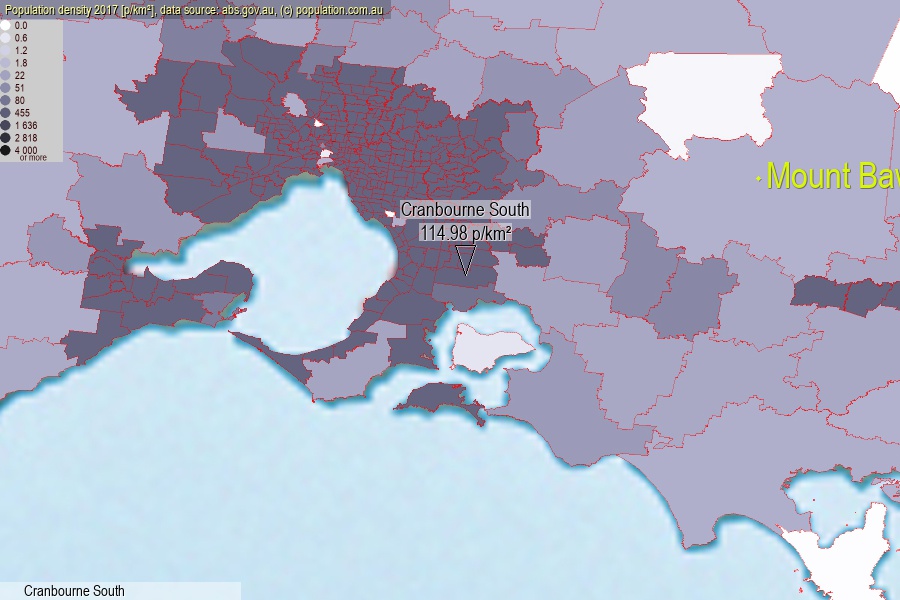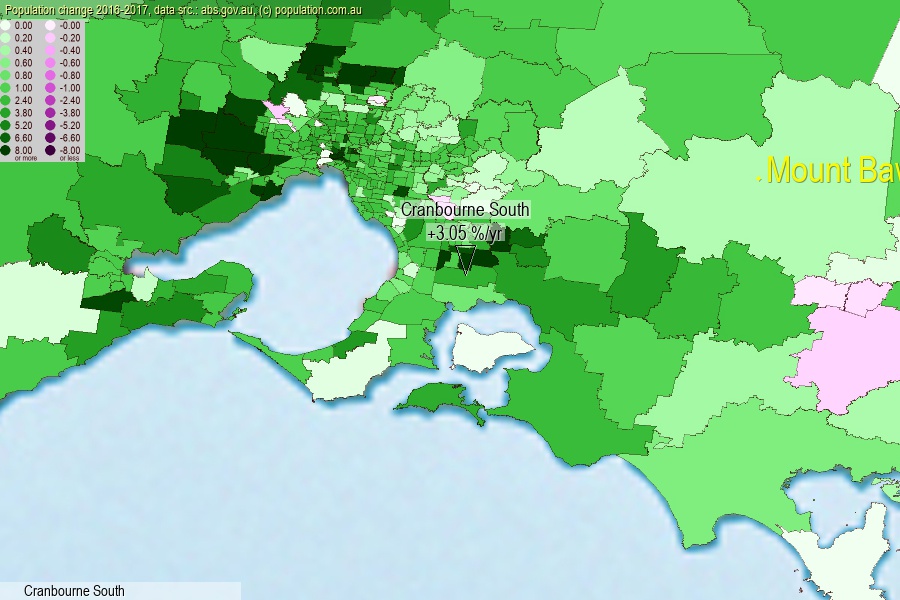 population.com.au
population.com.auLast official estimated population of Cranbourne South (as Statistical Area Level 2) was 9 394 people (on 2017-06-30)[2]. This was 0.04% of total Australian population and 0.146% of VIC population. Area of Cranbourne South is 81.70 km², in this year population density was 114.98 p/km² . If population growth rate would be same as in period 2016-2017 (+3.05%/yr), Cranbourne South population in 2025 would be 11 946. [0]



Click to enlarge. Cranbourne South is located in the center of the images.
Population [people], population density [p./km²] and population change [%/year] [2]
View borders » (new window) [4]
[1991-1992] +2.70 %/Yr.
[1992-1993] +0.55 %/Yr.
[1993-1994] -0.91 %/Yr.
[1994-1995] -1.71 %/Yr.
[1995-1996] -0.13 %/Yr.
[1996-1997] +4.43 %/Yr.
[1997-1998] +4.37 %/Yr.
[1998-1999] +3.57 %/Yr.
[1999-2000] +8.21 %/Yr.
[2000-2001] +5.54 %/Yr.
[2001-2002] -0.46 %/Yr.
[2002-2003] -0.25 %/Yr.
[2003-2004] +1.83 %/Yr.
[2004-2005] +1.53 %/Yr.
[2005-2006] +2.94 %/Yr.
[2006-2007] +1.40 %/Yr.
[2007-2008] +5.41 %/Yr.
[2008-2009] +7.64 %/Yr.
[2009-2010] +8.19 %/Yr.
[2010-2011] +9.02 %/Yr.
[2011-2012] +6.93 %/Yr.
[2012-2013] +8.06 %/Yr.
[2013-2014] +5.09 %/Yr.
[2014-2015] +4.17 %/Yr.
[2015-2016] +4.75 %/Yr.
[2016-2017] +3.05 %/Yr.
[0] Calculated with linear interpolation from officially estimated population
[1] Read more about SA2 and Australian Statistical Geography Standard (ASGS) on abs.gov.au
[2] Population data from Australian Bureau of Statistics (Population and density: 2017; change: 2016-2017)
[3] Digital Boundaries: Australian Statistical Geography Standard (ASGS) 2016.
[4] Border coordinates are simplifyed using Ramer-Douglas-Peucker algorithm.